Air of Authority - A History of RAF Organisation
No 251 - 255 Squadron Histories
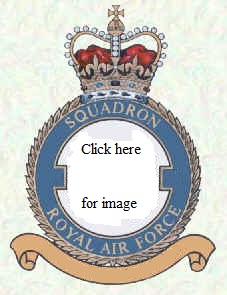 Formed
on 31 May 1918 from Nos 504, 505, 506 & 510 (Special Duty) Flights at Hornsea,
although the aircraft operated as detachments at Atwick, Greenland Top and
Owthorne. It was equipped with DH6 aircraft, which were used to carry out
anti-submarine patrols along the East Yorkshire coast. The squadron
disbanded on 30 June 1919.
Formed
on 31 May 1918 from Nos 504, 505, 506 & 510 (Special Duty) Flights at Hornsea,
although the aircraft operated as detachments at Atwick, Greenland Top and
Owthorne. It was equipped with DH6 aircraft, which were used to carry out
anti-submarine patrols along the East Yorkshire coast. The squadron
disbanded on 30 June 1919.
The squadron was reformed on 1 August 1944 at Reykjavik in Iceland from No 1407 Flight. Its role was Air-Sea Rescue and Meteorological reconnaissance using Ansons, Venturas and Hudsons, two of the latter being modified to carry airborne lifeboats. The Venturas were retired in October 1944 and in March 1945, Fortress IIs began to arrive and by August the last Hudson had left the squadron. However, at the same time some Warwicks were taken on strength and the squadron continued to operate the three types (Fortress, Warwick and Anson) until it disbanded on 30 October 1945.
.
Squadron Codes used: -
| FF | Allocated Apr 1939 - Sep 1939 |
| AD | Aug 1944 - Oct 1945 |
[Aircraft & Markings | Commanding Officers]
 Formed
on 1 May 1918 at Tynemouth by amalgamating the ex-RNAS 495, 507, 508, 509 and
510 Flights. It was equipped with Sopwith Baby, Kangaroos and DH6s, the first
two being given up in August 1918 and the third being retained until January
1919. These were operated as detachments at Cramlington, Seaton Carew and
Redcar. Reduced to cadre in January 1919, the squadron moved to
Killingholme where it disbanded on 30 June.
Formed
on 1 May 1918 at Tynemouth by amalgamating the ex-RNAS 495, 507, 508, 509 and
510 Flights. It was equipped with Sopwith Baby, Kangaroos and DH6s, the first
two being given up in August 1918 and the third being retained until January
1919. These were operated as detachments at Cramlington, Seaton Carew and
Redcar. Reduced to cadre in January 1919, the squadron moved to
Killingholme where it disbanded on 30 June.
The squadron was reformed on 21 November 1940 as Coastal Command's first Beaufighter unit, although it also operated Blenheims and did not become wholly equipped with Beaufighters until April 1941. In April 1941 the squadron moved to Northern Ireland but the following month a detachment was sent to Gibraltar, to assist in the protection of Malta bound convoys. On 15 June the squadron was re-numbered No 143 Squadron with the Mediterranean detachment continuing to operate alongside No 272 Squadron, from Egypt. However, on 15 September 1941 the detachment re-assumed the 252 number-plate.
The squadron continued by based in Egypt and Libya and to operate in the Mediterranean carrying out anti-shipping strikes against Axis targets in and around Crete and Greece. The squadron eventually moved to Greece in February 1945 carrying out operations in the Aegean as well as undertaking air-sea rescue duties and operating against communist ground forces following the German withdrawal. The squadron remained in Greece finally disbanding there on 1 December 1946.
.
Squadron Codes used: -
| GW | Allocated Apr 1939 - Sep 1939 |
| PN | Nov 1940 - May 1941 |
| BT | May 1941 - Nov 1942 |
| Squadron photo of No 252 Squadron
(courtesy Penny Benge) Taken on 1st or 2nd March 1942 click to enlarge |
 |
 |
 |
 |
 |
 |
 |
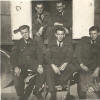 |
 |
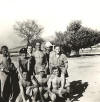 |
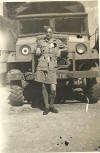 |
 |
 |
||
| Photos of No 252 Squadron
and Hassani (courtesy Phill Rose) click to enlarge |
||
 |
 |
| 'Tubby' Wyatt in the radio cabin at Araxos | No 252 Squadron personnel on the roof of the billet, 337 Wing, Salonika |
 |
 |
| In the NAAFI tent at Araxos | No 252 Squadron aircraft at dispersal at Araxos |
 |
 |
| Benny Myers (left) with Geoff Tallis outside of the transmitter hut at Araxos | Beaufighters of No 252 Squadron over Athens |
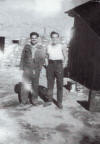 |
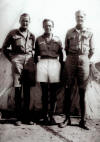 |
| Geoff Tallis (right) and Jack Mackenzie | Ken Pollock (left), Geoff Tallis and Roy Collinson (right) |
 |
 |
| The Signals Section of No 252 Squadron, winners of the Challenge Shield 1945-46 at Araxos (score 2-0) | Raising the standards at the Tomb of the Unknown Soldier |
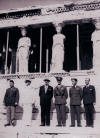 |
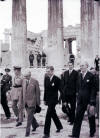 |
| General Scolie (3rd fro right), A/Cdre G W Tuttle (2nd from right) with Greek PM and other Allied officers in Athens | Anthony Eden during a visit to Athens |
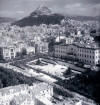 |
|
| A view of Athens on VE-Day showing the Royal Palace, Mount Lekavatos and the Tomb of the Unknown Soldier | |
| All the photos above are from the collection of Geoff Tallis, courtesy of his son Mike Tallis | |
[Aircraft & Markings | Commanding Officers]
No 253 (Hyderabad State) Squadron
 Formed
by amalgamating Nos 412, and 413 (Seaplane) Flights with Nos 511, 512 and 513
(Special Duties) Flights at
Bembridge on 7 June 1918. The seaplane flights were equipped with Short
184s and Short Campanias, whilst the land based special duties flights used
DH6s. All types were used for anti-submarine patrols right up until the
Armistice, with the unit being disbanded on 5 May 1919.
Formed
by amalgamating Nos 412, and 413 (Seaplane) Flights with Nos 511, 512 and 513
(Special Duties) Flights at
Bembridge on 7 June 1918. The seaplane flights were equipped with Short
184s and Short Campanias, whilst the land based special duties flights used
DH6s. All types were used for anti-submarine patrols right up until the
Armistice, with the unit being disbanded on 5 May 1919.
The squadron reformed on 30 October 1939 at Manston as a Blenheim coastal fighter unit, however, no aircraft were received and in February 1940, it began to receive Hurricanes, becoming operational in April. As the losses in France mounted, one flight was detached to join the BAFF, whilst the other flew over daily to operate from French bases but returned to Kenley every evening. With the fall of France, the squadron retired to Kirton-in-Lindsey, where it re-equipped until July, when it moved even further north to Turnhouse and later Prestwick.
The squadron finally joined the action in the south in August when it moved to Kenley, remaining there until January 1941 when it was rested at Leconfield. From February to September 1941, the squadron provided air defence cover for the Orkneys, returning south to fly convoy and coastal patrols along the East Coast. In August 1942, it was detached to Friston, from where it flew in support if the Dieppe landing, but two months later it was preparing for a move overseas.
It arrived in Algeria on 13 November 1942 and provided air cover for the 1st Army and its supply lines for the remainder of the North African campaign. In June 1943 it moved over to Sicily and the following October transferred to Italy. During this period, the squadron converted from Hurricanes to Spitfires and from February to April 1944 it flew anti-shipping operations and escort mission from Corsica, before returning to Italy, from where it continued these types of operations over the Balkans. The squadron finally moved into its area of operations in April 1945 when it relocated to Prkos in Yugoslavia itself. With the end of the war, it undertook occupation duties in Northern Italy and Austria, disbanding at Treviso on 16 May 1947.
No 253s final incarnation began on 18 April 1955 when it reformed as a night fighter squadron at Waterbeach, equipped with Venom NF Mk 2s, but this part of its career was short-lived as it was disbanded on 1 September 1957.
Squadron Codes used: -
| TL | Allocated Apr 1939 - Sep 1939 |
| SW | Oct 1939 - May 1947 |
"I have read in a number of posts that there have been questions raised about my father J D Ford 41917 who was shot down over France on 23rd May 1940 during what became known as the Battle of France. He was with 253 Squadron. There is also a photo of his Hurricane on the ground with some German officers surveying the damage. The questions are was he killed, captured or did he escape.
He actually bailed out of the aircraft and during his decent received a cannon bullit in his back which rendered him un-conscious. Luckily he landed on territory still controlled by allied forces, and was transferred into a field ambulance. On his journey to Dunkirk the ambulance took a direct bomb hit and all the occupants except him and one other were killed. He received a blind eye, and for the rest of his life bomb splinters would periodically erupt from his body in bloody boils.
After 7 months recuperation he returned to active service, but because of his blind eye was no longer able to fly operationally. After a period in air defence ops rooms he was transferred to the RAF’s special branch and spent the rest of the was in Burma.
He had a full RAF career once the war ended, and retired s a Group Captain in 1974, having taken on ‘Group’ responsibility for Air Defence during the Cold War.
Rob Ford" - rob@fordcornwall.co.uk
[Aircraft & Markings | Commanding Officers]
 Formed
on 25 July 1918 from Nos 492, 515, 516, 517 & 518 (Special Duty) Flights at
Prawle Point. It was equipped with DH6 and DH9 aircraft, which were used
to carry out anti-submarine patrols over the English Channel and along the
Cornish coast. The squadron disbanded on 22 February 1919.
Formed
on 25 July 1918 from Nos 492, 515, 516, 517 & 518 (Special Duty) Flights at
Prawle Point. It was equipped with DH6 and DH9 aircraft, which were used
to carry out anti-submarine patrols over the English Channel and along the
Cornish coast. The squadron disbanded on 22 February 1919.
The squadron was reformed as a coastal fighter unit on 30 October 1939 at Stradishall. Equipped with Blenheims, it carried out coastal patrols and convoy escort operations along the East Coast. From April 1940, it added reconnaissance and fighter escort for anti-shipping strikes to its range of duties. The squadron moved to Aldergrove in May 1941 and then to Dyce in December, where it converted to Beaufighters in June 1942.
In August the squadron began to carry out training in the torpedo bombing role and in November it joined the North Coates Strike Wing, remaining as part of the Wing, until June 1945 when the squadron moved to Chivenor. It received some Mosquito XVIIIs in April 1945 but these left in May. Moving to Langham in November it received a Buckmaster for crew conversion onto the Brigand, but it was decided not to issue this type to coastal strike squadrons and so it remained equipped with the Beaufighter until disbanded by being renumbered No 42 Squadron on 1 October 1946.
The squadron's final incarnation took place between 1 December 1959 and 23 August 1963 when it operated as a Thor IRBM missile unit at Meltom Mowbrey.
.
Squadron Codes used: -
| HJ | Allocated Apr 1939 - Sep 1939 |
| QY | Oct 1939 - Jul 1942 |
| QM | Oct 1943 - Oct 1946 |
[Aircraft & Markings | Commanding Officers]
 Active
from 6 July 1918 it was formed from Nos 519, 520, 521, 522, 523 & 524 (Special Duty) Flights at
Pembroke. It was equipped with DH6 aircraft, which were used to carry out
anti-submarine patrols over St George's Channel and the Western Bristol Channel. The
squadron disbanded on 14 January 1919.
Active
from 6 July 1918 it was formed from Nos 519, 520, 521, 522, 523 & 524 (Special Duty) Flights at
Pembroke. It was equipped with DH6 aircraft, which were used to carry out
anti-submarine patrols over St George's Channel and the Western Bristol Channel. The
squadron disbanded on 14 January 1919.
The squadron reformed on 23 November 1940 at Kirton-in-Lindsey as a night fighter unit. Equipped with Defiants, the squadron began operations on 5 January 1941, and in March it acquired some Hurricanes, before moving to Hibaldstow in May, where it began the conversion to Beaufighter IIs in July. It moved to Coltishall in September, with further moves to High Ercall (March 1942), where it converted to Beaufighter VIs, and Honiley (June) which preceded a move to North Africa in November 1942.
In North Africa, it provided night defence of Allied bases in Algeria and Tunisia and also engaged in convoy protection and experimental night intruder operations over Sardinia, before moving to Sicily in August 1943. The squadron arrived on the Italian mainland in November, resuming its night intruder role against transport links in the Balkans. Mosquitos replaced the Beaufighters in January 1945, which were taken to Hal Far in Malta in September. Another move came in January 1946 to Egypt, but on 30 April 1946 the squadron was disbanded.
.
Squadron Codes used: -
| BY | Allocated Apr 1939 - Sep 1939 |
| YD | Nov 1940 - Apr 1946 |
[Aircraft & Markings |
Commanding Officers]
No.255 Squadron Association c/o Christopher M. Eley, Flat 8 St.James's Court, 65 Gayton Road, HARROW,
Middlesex HA1 2LX Phone: 07946-260539
Web: http://www.255.org.uk | http://www.flickr.com/photos/255_squadron_raf/
E-mail: <office@255.org.uk> with "cc" to <chris@eley.name>
Message from Chris Eley: -
"I would be especially interested in hearing from anyone with knowledge of a silver chain, a bit like a giant charm bracelet, about 1.5 metres in length and adorned with minature chamber pots. On these 'jerries' were engraved details of 'Jerry' aircraft shot down by the squadron. Of particular interest would be reports of sightings of this artefact in the period March 1943 (when it went missing in Algeria) through to December 2011 and additionally since its appearance on the Channel 4 TV show 'Four Rooms' on 23 May 2013."
Squadron badge image on this page is courtesy of Steve Clements
© Crown Copyright is reproduced with the permission of the Directorate of Intellectual Property Rights
This page was last updated on 28/03/19 using FrontPage 2003©
![]() Organisational Index
Organisational Index ![]()